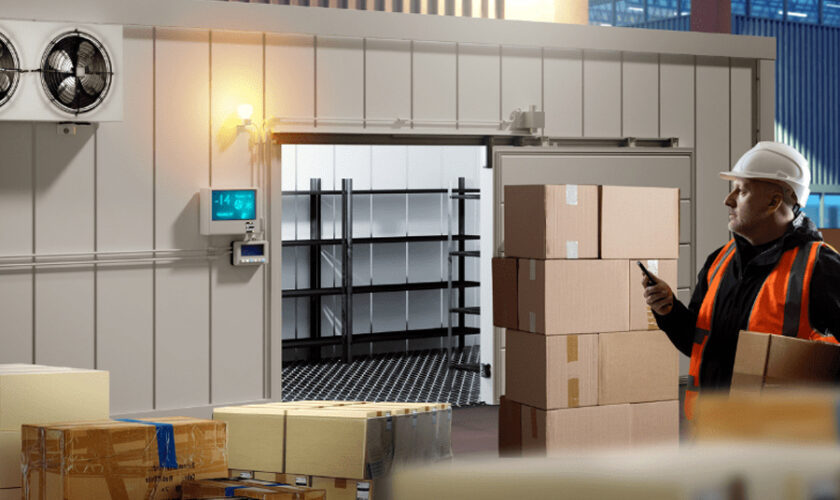Urbanization is a global trend that presents unique challenges and opportunities for the cold chain industry. With over 55{42f22524752c9315c5fc620fcf827f5a9ba4a5ec7392f3dd6acee0af5a0eb151} of the world’s population now living in urban areas—a figure projected to rise to 68{42f22524752c9315c5fc620fcf827f5a9ba4a5ec7392f3dd6acee0af5a0eb151} by 2050 according to the united nations—ensuring the efficient operation of cold chains in high-traffic urban environments has become increasingly critical. This blog post explores the complex challenges faced by cold chain logistics in densely populated cities and highlights innovative solutions that are being implemented to overcome these obstacles.
Urban cold chain challenges
Congestion and accessibility:
One of the primary challenges in urban cold chain logistics is traffic congestion, which can lead to significant delays in the delivery of temperature-sensitive products. Narrow streets and restricted areas further complicate accessibility, increasing the risk of product spoilage.
Statistical insight:
According to a study by the texas a&m transportation institute, traffic congestion causes over $160 billion in lost productivity annually in the united states alone, significantly impacting logistics operations including the cold chain.
Energy efficiency and environmental concerns:
Urban areas are also hotspots for environmental concerns, with emissions from refrigerated transport contributing to air pollution and climate change. Traditional refrigeration units used in vehicles and storage facilities are energy-intensive and often rely on greenhouse gas-emitting refrigerants.
Innovation in focus:
Advances in electric and hybrid refrigeration units are helping to reduce the carbon footprint of urban cold chains. Companies like carrier and thermo king are leading the way in developing more sustainable refrigeration technologies for vehicles and warehouses.
Innovative solutions for urban cold chains
Micro-fulfillment centers: to tackle congestion and accessibility issues, businesses are turning to micro-fulfillment centers (mfcs) located within or near urban centers. These smaller distribution hubs can expedite the delivery process, reduce travel distances, and improve the overall efficiency of the cold chain.
Case study:
In new york city, companies like amazon fresh and ocado have established mfcs to facilitate faster delivery of perishable goods, demonstrating a significant reduction in delivery times and improved customer satisfaction.
Urban vertical farming:
Urban vertical farms offer a sustainable solution to reduce the cold chain’s length by growing produce directly in cities. These high-tech farms use controlled environments to produce fresh fruits and vegetables year-round, minimizing the need for long-distance transportation and refrigeration.
Success story:
Aerofarms, a leader in vertical farming, operates several facilities in urban areas, supplying local supermarkets with fresh produce that requires minimal transportation and refrigeration, thereby reducing the environmental impact.
Advanced packaging technologies:
Innovative packaging solutions are being developed to maintain the temperature integrity of perishable goods during transit. These include phase change materials (pcms), insulated containers, and smart packaging that can monitor and report the temperature in real-time.
Technology spotlight:
Smart packaging equipped with iot sensors is becoming increasingly popular, allowing companies to monitor the condition of goods in real-time and take corrective actions if temperatures deviate from the required range.
Eco-friendly refrigerated transport:
Electric and hybrid refrigerated vehicles are emerging as a solution to the environmental challenges posed by traditional refrigerated transport. These vehicles produce fewer emissions and are better suited for navigating urban environments.
Pioneering effort:
In london, the adoption of electric refrigerated vans for last-mile delivery of perishable goods has been shown to reduce emissions by up to 40{42f22524752c9315c5fc620fcf827f5a9ba4a5ec7392f3dd6acee0af5a0eb151} compared to diesel vans, according to a study by the university of cambridge.
Conclusion
The challenges of managing cold chains in high-traffic urban environments are significant but not insurmountable. Through innovative approaches such as micro-fulfillment centers, urban vertical farming, advanced packaging technologies, and eco-friendly refrigerated transport, businesses can enhance the efficiency and sustainability of urban cold chains. As cities continue to grow, these solutions will play a vital role in ensuring the timely, safe, and environmentally responsible delivery of temperature-sensitive products to urban consumers.

